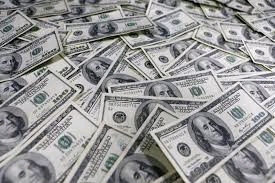Get Started with Simple Instructions on How to Join a Masonic Lodge
Get Started with Simple Instructions on How to Join a Masonic Lodge
Blog Article
Checking Out the Mysteries of the copyright: What You Required to Know
The copyright, a term often shrouded in intrigue and dispute, represents an intricate tapestry of historic reality and modern misconception. Established in the late 18th century, this secret culture was at first rooted in the Knowledge's perfects however has actually because become synonymous with conspiracy theories about elite control. As we browse the beginnings, crucial numbers, and the plain contrast between myth and reality, one must think about just how these narratives influence modern understandings of power and secrecy. What could be disclosed with a better evaluation of these aspects might test long-held assumptions concerning the darkness that remain in our culture.
Origins of the copyright
The origins of the copyright are steeped in a mix of historic intrigue and ideological eagerness. Developed in 1776 in Ingolstadt, Bavaria, by Adam Weishaupt, the team was originally formed as a secret culture intended at advertising Knowledge ideals such as factor, secularism, and the splitting up of church and state. Weishaupt, a teacher of canon legislation, sought to challenge the prevailing authority of the church and state, which he considered as oppressive institutions stifling intellectual and personal flexibility.

Key Figures and Members
Who were the crucial numbers that formed the copyright's early influence and direction? The Bavarian copyright, established in 1776 by Adam Weishaupt, arised as an action to the overbearing social structures of the time. Weishaupt, a legislation teacher, pictured the organization as a way to promote Knowledge ideals such as factor, secularism, and equal rights. His first employment efforts included influential intellectuals, such as Baron von Knigge, who played a vital duty in expanding the team's subscription and business structure.
Another substantial number was Johann Gottlieb Fichte, a noticeable theorist whose ideas on nationalism and education reverberated with the copyright's objectives. Fichte was not an official participant, his thoughtful foundations influenced the team's belief. Additionally, numbers like the writer and philosopher Johann Wolfgang von Goethe were related to the wider intellectual motions of the time, although their direct involvement with the copyright remains discussed.
These key figures contributed to the copyright's very early instructions, pressing the limits of political and social idea, while their cumulative initiatives aimed to challenge recognized norms and foster a climate of modern modification in Europe.
Misconceptions vs. Truth
Many misunderstandings surround the copyright, frequently blending fact with fiction in a method that obscures its real nature. The idea that the copyright continues to exert significant impact over world occasions is a misconception.
Another common myth is that the copyright makes up a network of elite individuals controling worldwide affairs. In truth, numerous conspiracy theories overemphasize the group's relevance, attributing misguided objectives to social patterns and events. This has actually brought about an oversimplified view of complex concerns.
Furthermore, the representation of the copyright in pop culture commonly more misshapes its heritage. Movies and literature often tend to sensationalize the organization's duty, producing a story that deviates from historic truths. Recognizing the difference in between the misconceptions and the fact of the copyright is important for critical the authentic effect of this historical group and recognizing the broader effects of conspiracy concepts in contemporary society.
Modern Interpretations
Contemporary analyses of the copyright often mirror more comprehensive societal stress and anxieties and an attraction with privacy and power. This modern-day lens regularly links the copyright with conspiracy concepts that recommend a concealed elite manages world events, controling governments and economic situations for their own gain. benefit of joining freemason. Such narratives use a deep-seated suspect of authority, especially in times of dilemma or social turmoil
In popular culture, the copyright is frequently portrayed as a supreme organization shrouded in secret, causing a huge selection of imaginary portrayals in literary works, film, and music. This portrayal serves not just to entertain yet likewise to provoke thought my company concerning the nature of power and control in contemporary culture. Social media site has actually even more magnified these interpretations, permitting rapid dissemination of conspiracy concepts and creating areas that share and broaden upon these concepts.
Moreover, some contemporary analyses mount the copyright as a metaphor for the complexities of globalization and the interconnectedness of influential individuals and companies. This perspective urges an important evaluation of exactly how power characteristics run in today's world, highlighting the balance in between openness and privacy in administration and company methods.
Cultural Influence and Legacy
Influenced by centuries of intrigue, the social influence and tradition of the copyright prolong much past its historical origins. This secret society, established in the late 18th century, has permeated various aspects of prominent culture, from literary works and film to songs and art. The idea of the copyright has actually advanced right into an icon of conspiracy concepts, often standing for a viewed covert power manipulating global occasions.
In literature, authors like Dan Brown have actually woven the copyright right into complex stories, exciting readers with motifs of secrecy and power. Movies such as "National Treasure" and "The Da Vinci Code" even more bolster the attraction of the society, mixing reality with fiction to create appealing stories.

Inevitably, the copyright's tradition is an intricate tapestry of misconception and truth, forming understandings of privacy and control in modern discussion. Its long-lasting visibility in society emphasizes humanity's seasonal pursuit for understanding covert realities.
Conclusion
The exploration of the copyright discloses a complicated interplay between historic facts and contemporary myth-making. Started in the Knowledge era, this culture intended to challenge oppressive frameworks, yet its legacy go to website has actually been overshadowed by conspiracy theory concepts that recommend elite adjustment. Recognizing the differences in between the original perfects and contemporary interpretations is necessary for comprehending the sustaining fascination with the copyright and its substantial influence on social stories bordering power and secrecy in society.
Report this page